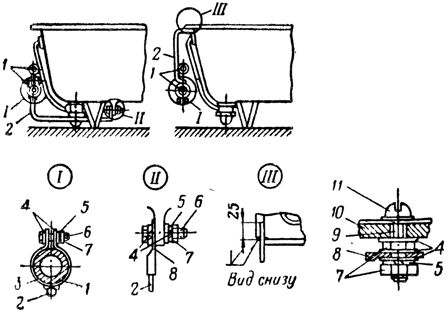Grounding and neutralizing the equipment
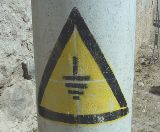 To ensure the safety of people in networks up to 1000 V, neutral grounding is used for neutral grounding. In these networks, the grounding of equipment frames without a metallic connection to the neutral of the transformer or generator is prohibited. The chain of neutral conductors used for grounding must not have fuses and disconnecting devices.
To ensure the safety of people in networks up to 1000 V, neutral grounding is used for neutral grounding. In these networks, the grounding of equipment frames without a metallic connection to the neutral of the transformer or generator is prohibited. The chain of neutral conductors used for grounding must not have fuses and disconnecting devices.
All equipment to be neutralized is connected in parallel to the neutralization line (see Fig. 1). Series grounding is prohibited.
The connection of the neutral conductors to the equipment is carried out by welding or under a bolt. In all places where it is possible to connect a temporary earth for repair work, there should be special bolts or areas cleaned and lubricated with petroleum jelly.
The neutral terminal of the generator or transformer must be connected to the grounded neutral bus of the switchboard with a separate busbar. The neutral bus is attached to the shield frame on insulators. The substation switchboard frames are bussed to the ground line.
Protective screens and power distribution points are zeroed by connecting to the neutral conductor of the power line, and in the absence of such a special grounding bus must be laid by the substation. In addition, it is necessary to connect them to the sheaths of all cables, electrical wiring pipes and nearby grounded pipelines and metal structures.
The connection of neutral and ground wires inside shields and cabinets is made to the ground bus using bolts. No more than two wires can be connected per bolt.
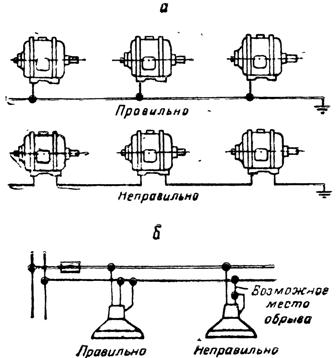
Rice. 1. Connecting parts of the electrical installation to the grounding network: a — electric motors, b — lamps
Electric motors and starting equipment are neutralized with the help of pipes in which the supply wires are laid, or with the help of separate neutralizing wires (Fig. 2). Instead of neutralizing individual devices or motors, it is allowed to reliably ground the body of the machine on which they are installed.
Luminaires are neutralized by connecting to a neutral wire or grounded structure. The neutral wire must be connected at one end under the grounding bolt of the armature and at the other end to the grounded structure or neutral wire (Fig. 1).
The methods of grounding various types of electrical equipment are shown in fig. 2-7.
Portable electrical receivers are neutralized using separate copper wires with a cross-section of at least 1.5 mm2 in a common sheath with phase wires.
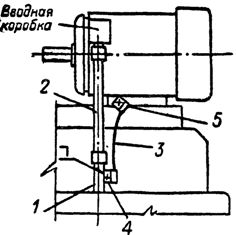
Rice. 2. Motor housing reset: 1 — electrical wiring steel tube, 2 — flexible terminal, 3 — jumper, 4 — flag pin 25x30X3mm, 5 — ground bolt
Portable pantograph receptacles must have an earthing contact that connects to the plug before live contacts are connected.
Cases of mobile mechanisms receiving electricity from stationary sources or mobile power plants must have a metallic connection with grounding or grounding of these sources of energy.
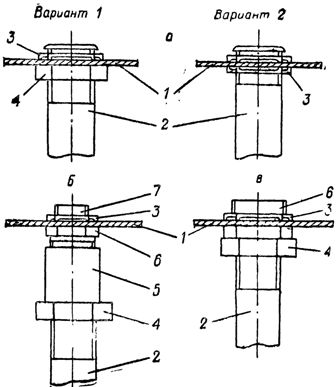
Rice. 3. Connecting a metal body to a steel pipe of electrical wiring: a — the diameter of the hole in the body corresponds to the diameter of the pipe, b — the diameter of the hole in the body is smaller than the diameter of the pipe, c — the diameter of the hole in the body is larger than the outside diameter of the pipe, 1 — metal body, 2 — steel pipe wiring, 3 — adjusting nut K480 -K486, 4 — lock nut, 5 — straight sleeve, 6 — leg, 7 — double nut.
The housings of single-phase welding transformers are reset using a third wire in the three-wire supply hose.
Metal sheaths of wires and cables, armor, flexible metal sleeves, steel pipes for electrical wiring must be neutralized.
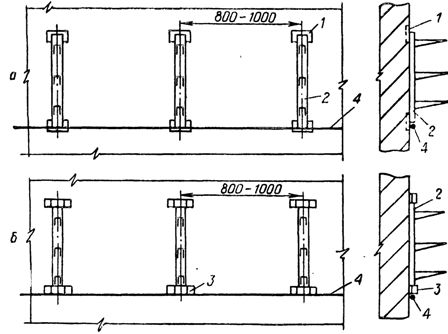
Rice. 4. Reset of single cable structures: a — painted, welded to built-in elements, b — galvanized, fixed with clamps, 1 — built-in element, 2 — cable structure, 3 — clamp, 4 — wire connected at the beginning and end of the route to the zero line welded to each built-in element or bracket.
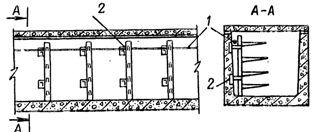
Rice. 5. Zeroing of cable structures in channels: 1 — the zeroing wire is welded to each built-in element and at the beginning and end of the route is connected to the zero line, 2 — the built-in element
Note.In double-sided arrangement of cable structures, the neutral conductors at the beginning and end of the route are connected with jumpers by welding
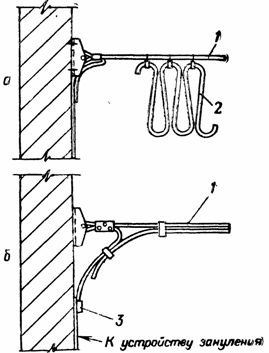
Rice. 6. Reset of welded trays laid on the wall: 1 — bolt M6x26, 2 — nut M8, 3 — washer
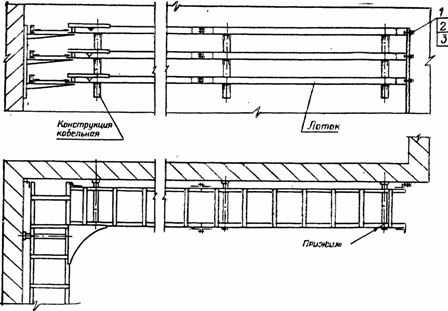
Rice. 7. Zeroing of the carrier cable: a — for flexible current supply, b — for suspension of the cable or wires of the cable wiring, 1 — carrier cable, 2 — cable with an insulating sheath, 3 — sleeve Note. A support cable connected at both ends to the ground line by welding or a sleeve.
The jacket and armor of the cables are canceled at both ends of the connecting paths with a jumper made of a flexible stranded copper wire, the cross-section of which is indicated below.
Cable core section, mm2 up to 10 16-35 50-120 150 and more Reset jumper section, mm2 6 10 16 25
Metal supports and reinforcement of reinforced concrete supports are connected to a neutral earth conductor.
In residential and public buildings, it is imperative to neutralize the metal boxes of household stationary electric stoves, boilers and portable electrical appliances with a power of more than 1.3 kW, as well as metal boxes of electrical equipment and metal pipes for electrical wiring located in basements, underground , on stairs, in public toilets, showers, etc. premises.
In rooms without increased danger, as well as in kitchens, grounding of stationary installed equipment (except for electric stoves), as well as portable electrical appliances with a power of up to 1.3 kW (irons, tiles, kettles, vacuum cleaners, washing and sewing machines and etc.) is not required.
In bathrooms of residential and public buildings, baths, hospitals, etc., metal bodies of bathtubs and shower trays must be connected with metal wires to water pipes to equalize the potential (Fig. 8). Do not use gas lines for equipotential bonding.
Rice. 8. Grounding of the metal body of the bathtub by connecting it to the water pipes: 1 — water pipe, 2 — grounder, 3 — clamp, 4 — washer, 5 — washer, spring separation, 5 — bolt, 7 — nut, 8 — tip, 9 — screw, 10 — bath body, 11 — screw.
In public buildings, premises of increased danger and particularly dangerous (industrial premises of catering establishments, boiler rooms, refrigerators, production workshops of enterprises for household services, school workshops, bathrooms, ventilation chambers, air conditioning chambers, machine rooms of elevators, pumps stations, heating points, etc. All stationary and portable electrical receivers that do not have double insulation, steel pipes for electrical wiring, metal boxes of panels and cabinets must be grounded. 220 and 380 V plugs for connecting portable and mobile electrical receivers must have protective contacts connected to the neutral wire.
In rooms without increased danger, with suspended ceilings, lamps and metal ceiling structures must be neutralized.
In entertainment establishments, the metal structures and housings of all stage apparatus, as well as the housings of all shields in all rooms, must be earthed to zero.
Metal boxes of projectors and sound-making equipment should be neutralized with separate insulated wires and additionally connected to a separate ground located near the control room.

